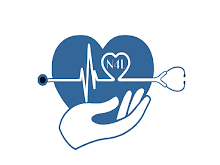Airborne infection
Speaking of airborne infections the first thing that comes to your mind is COVID-19 pandemic. That’s true, it’s one of airborne infections so why don’t we dig more into this kind of infections and it’s considered one of the major risks that faces healthcare personnel.
What is airborne infection?
Airborne infection is the transmission of infectious microorganisms that hit the respiratory system through air hence the word ‘airborne’. Some microorganisms can transfer to humans via animals like cattle, it may be virus, bacteria or fungi
How airborne transmission work exactly?
It can be direct or indirect way so if we’re talking about direct then it’s when the microorganism comes out of the infected person when talking, sneezing, and coughing and the microorganism enters directly through mouth, nose or eyes of another person .
On the other hand indirect way is when droplet that comes out when coughing or sneezing and lay on any appliances or furniture like a mobile phone or a sofa and another man touches those things with his bare hands and touch his face afterwards then it’s more likely he’s going to be infected in an indirect way.
Types of airborne infection
Many diseases are spread through the air, including these:
Coronavirus and COVID-19: most known disease nowadays due to its rapid spread worldwide .
The common cold
Influenza or the flu
Chickenpox: caused by varicella zoster virus and we usually get infected with it once in our life then it becomes dormant
Mumps: another viral infection but not common due to vaccination
Tuberculosis (TB): a bacterial infection that doesn’t spread easily, it doesn’t show symptoms most of the times and immunocompromised people are at high rist of developing symptoms.
Symptoms are usually the same:
inflammation of your nose, throat, sinuses, or lungs
coughing
sneezing
congestion
runny nose
sore throat
swollen glands
headache
body aches
loss of appetite
fever
fatigue
Prevention
Although it’s impossible to completely avoid airborne pathogens, there are some things you can do to lower your chances of getting sick:
Avoid close contact with people who have active symptoms of disease.
Stay home when you’re sick. Don’t let vulnerable people come in close contact with you.
If you must be around others, wear a face mask to prevent spreading or breathing in germs.
Cover your mouth when you cough or sneeze. Use a tissue or your elbow to cut down on the possibility of transmitting germs on your hands.
Wash your hands thoroughly (at least 20 seconds) and often, especially after sneezing or coughing.
Avoid touching your face or other people with unwashed hands.
References:
La Rosa G, Fratini M, Della Libera S, Iaconelli M, Muscillo M (1 June 2013). "Viral infections acquired indoors through airborne, droplet or contact transmission".
Clark RP, de Calcina-Goff ML (December 2009). "Some aspects of the airborne transmission of infection"
By: Ahmed Nasser
Linkedin profile:
https://www.linkedin.com/in/ahmed-nasser-b4681615







0 comments:
Post a Comment